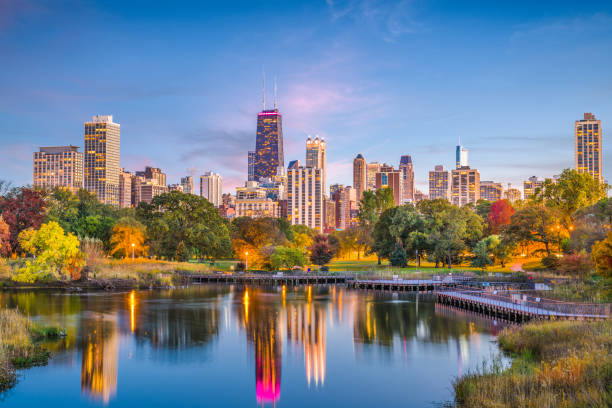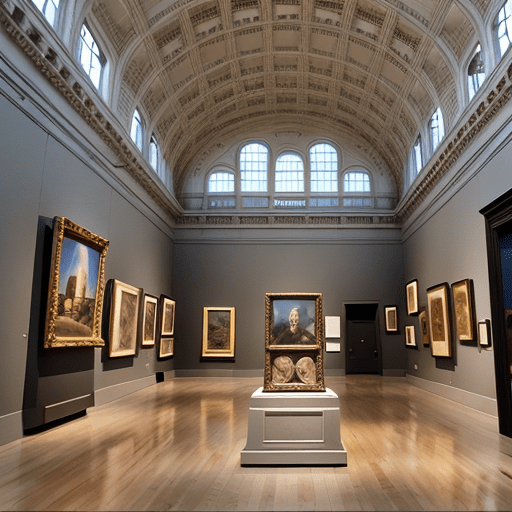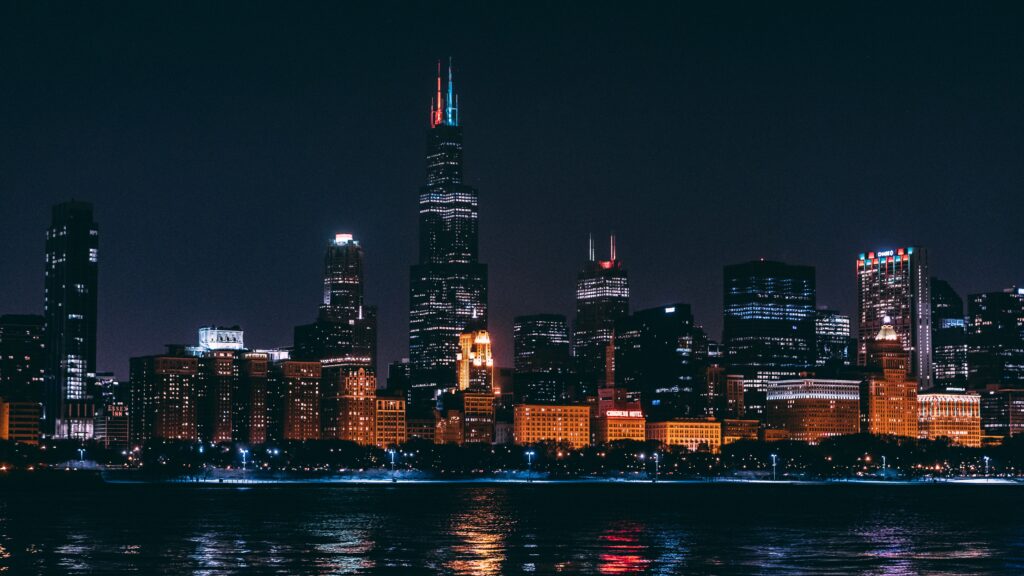
The city of Chicago is located in northeastern Illinois near the southwestern shore of Lake Michigan. This well-known metropolitan area sits in both the Midwest of the US and the Great Lakes region. The Chicago Portage is a continental divide at the city’s location, connecting the drainage basins of the Mississippi River and the Great Lakes. The lake serves a positive purpose in moderating the climate of the area, making waterfront neighborhoods milder in the winter and cooler in the summer. The map of the original 58 blocks of the city when it was founded in 1837 show the majority of the buildings around the mouth of the Chicago River. The average elevation of the city is 579 ft with the lowest parts along the lake shore at 578 ft and the highest point at 672 ft. In addition to the downtown Chicago River, the Calumet River in the far south side of the city is partially within the city’s limits. The entire Chicago metropolitan area is often referred to as “Chicagoland” and includes the city of Chicago, the rest of Cook County, and eight nearby Illinois counties, along with three counties in Indiana. The Illinois Department of Tourism and the Chicagoland Chamber of Commerce both have different definitions of the area. There are 24 public beaches across 26 miles of the waterfront, as well as many parks such as Lincoln Park, Grant Park, Burnham Park, and Jackson Park. Navy Pier, Northerly Island, the Museum Campus, and a large portion of the McCormick Place Convention Center are all located on landfilled portions of the lake. High-rise commercial and residential buildings are generally close to the waterfront.
The term “Chicago” has its origin in the Miami-Illinois word “shikaakwa”, which is a reference to a type of wild onion. This was the first time the site of the current city was called “Checagou” by Robert de LaSalle in 1679. Henri Joutel recorded in his journal in 1688 that garlic grew in abundance in the region. He wrote in late September 1687: “…the said place called ‘Chicagou’ has taken its name from the copious amount of garlic that grows in the area’s forests.” Throughout its history, Chicago has been given several nicknames, such as the Windy City, Chi-Town, Second City and City of the Big Shoulders.
History of Chicago

In the mid-eighteenth century, the area that was to become Chicago had been settled by the Potawatomi people, who had succeeded the Miami and Sauk and Fox inhabitants. Jean Baptiste Point du Sable, often referred to as the “Founder of Chicago”, was the first known non-indigenous person to settle in the region—he is believed to have come from the French colony of Saint-Domingue (Haiti) in the late 1780s. Following the victory of the United States in the Northwest Indian War in 1795, the land that would become Chicago was given to the US to be used as a military post. Fort Dearborn was built in 1803, but was destroyed during the War of 1812 in the Battle of Fort Dearborn by the Potawatomi, before being rebuilt. In 1816, the Ottawa, Ojibwe, and Potawatomi tribes gave additional land to the US in the Treaty of St. Louis. The Potawatomi people were later forced to leave their land after the 1833 Treaty of Chicago, and were sent west of the Mississippi River as part of the federal policy of Indian removal.
Chicago in the 1800s
The population of the Town of Chicago was approximately 200 when it was organized on August 12, 1833, and had grown to over 6,000 people by 1835. On March 4, 1837, the City of Chicago was legally constituted, and for several decades, it became the world’s most rapidly-growing city. With the Chicago Portage in the area, Chicago became a key transport hub between the East and West of the United States. The Galena and Chicago Union Railroad and the Illinois and Michigan Canal both opened in 1848, offering steamboats and sailing vessels on the Great Lakes a means to access the Mississippi River.
People from small towns and immigrants from overseas came to the United States due to a thriving economy. Manufacturing, retail, and finance businesses became the leading sectors, having a strong effect on the American economy. The Chicago Board of Trade, established in 1848, began listing standardized and exchange-traded futures contracts for the first time.
In the mid-19th century, Chicago gained recognition in the United States political arena with Senator Stephen Douglas living there; he was a major supporter of the Kansas–Nebraska Act and the concept of “popular sovereignty” as a way to resolve the debate of slavery’s growth. This situation also helped propel Abraham Lincoln, another Illinoisan, onto the national stage. He was selected to be the Republican nominee for President of the United States at the 1860 Republican National Convention, which was held in the Wigwam, a specially built auditorium. Lincoln was victorious in the general election over Douglas, which consequently led to the American Civil War.
In order to meet the needs of its fast-growing population and a demand for better sanitation, the city of Chicago took steps to upgrade its infrastructure. On February 1856, the Common Council gave their blessing to Chesbrough’s plan to construct the nation’s initial full-scale sewerage system. This project lifted a good portion of central Chicago to a higher elevation with the use of jackscrews for lifting buildings. Even though it initially enhanced the city’s health, the untreated sewage and industrial waste were now being discharged into the Chicago River and, in turn, into Lake Michigan, polluting the city’s main source of freshwater.
In 1900, the City of Chicago was able to largely resolve its sewage contamination problem by means of a major engineering feat. This involved tunneling two miles out into Lake Michigan to newly built water cribs and reversing the flow of the Chicago River. It changed the direction of the flow so that the water moved away from Lake Michigan instead of into it. This undertaking was made possible because of the construction and enhancement of the Illinois and Michigan Canal, and was finished with the Chicago Sanitary and Ship Canal that links up to the Illinois River, which runs into the Mississippi River.
The Great Chicago Fire of 1871 burned an area of 4 miles by 1 mile, leaving a large portion of the city in ruins. Nonetheless, the railroads and stockyards were unharmed. This devastation resulted in the construction of more modern buildings using steel and stone, which set a precedent for future architecture globally. Chicago then became the birthplace of the world’s first skyscraper in 1885, built with steel-skeleton construction.
Between 1851 and 1920, the city experienced a remarkable growth in population and size due to the addition of many nearby townships. The most substantial incorporation of townships happened in 1889 when five townships joined the city, including the Hyde Park Township, which now makes up the South Side and southeast regions of Chicago, and the Jefferson Township, which currently makes up the Northwest Side. The joining of the city was driven by the municipal services that the city could provide its residents.
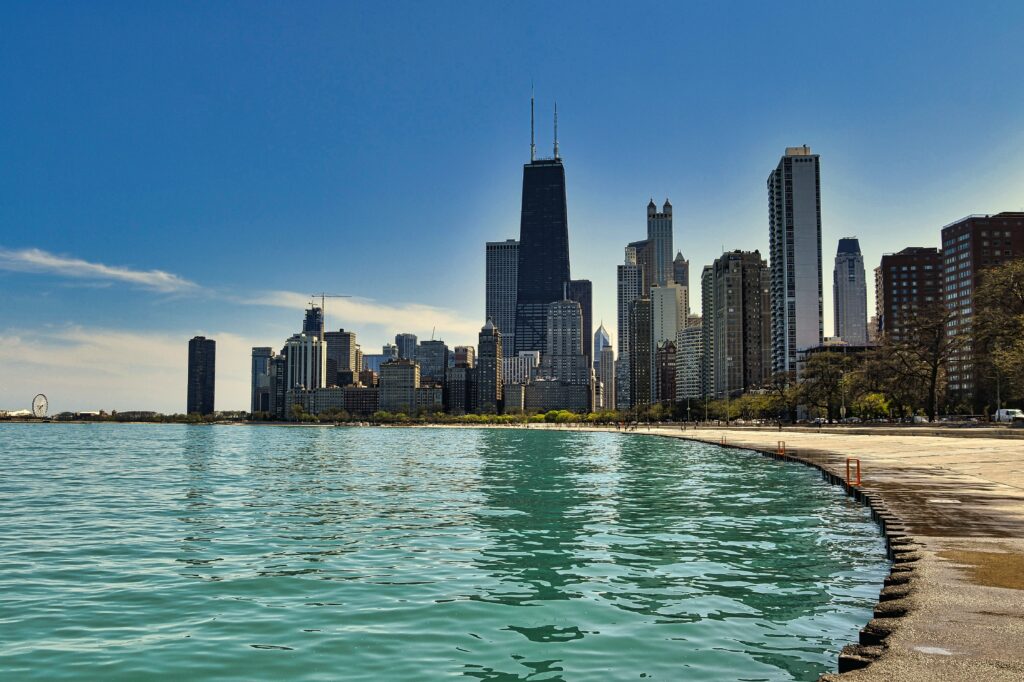
Chicago’s thriving economy drew in a huge influx of new immigrants from Europe and those relocating from the Eastern United States. At the turn of the century, of the total population, more than 77% were either foreign-born or born in the United States to foreign parents. Germans, Irish, Poles, Swedes, and Czechs constituted close to two-thirds of the immigrant population.
Industrial advancement and an influx of workers sparked labor disputes, such as the Haymarket affair of 1886 and the Pullman Strike four years later. Anarchists and socialists were major figures in the formation of massive and well-orchestrated labor movements. Alarmed by the plight of Chicago’s immigrants, Jane Addams and Ellen Gates Starr established Hull House in 1889 to address social issues.
In the 1870s and 1880s, Chicago rose to prominence in the effort to improve the health of the public. Legislation was established, both at the municipal and state level, to set higher standards for medical practice and to tackle epidemics such as cholera, smallpox, and yellow fever. These regulations served as a model for public health reform in other locations.
In order to boost public health, Dr. John H. Rauch, M.D. developed a plan for Chicago’s park system in 1866. To fulfill this plan, he worked to close a crowded cemetery and replace it with Lincoln Park. In addition, after facing an outbreak of cholera in 1867, Rauch helped to form the Chicago Board of Health. Ten years later, he stepped up to become the secretary, and then the president, of the first Illinois State Board of Health which mainly operated in Chicago. This move resulted in the establishment of many large, aesthetically-pleasing municipal parks.
In the years between World War I and the 1920s, a massive expansion in industry occurred, drawing African Americans from the South to Chicago. This influx of people had a profound impact on the city’s cultural landscape, developing what is now known as the Chicago Black Renaissance and the New Negro Movement, which was expressed through art, literature and music. Unfortunately, the period was also met with racial tension and violence – such as the Chicago Race Riot of 1919. This caused the African American population of the city to grow from 44,103 to 233,903 between 1910 and 1930.
During the 19th century, Chicago had the distinction of being the nation’s rail hub, with over 20 railroads providing passenger service from six different downtown stations by 1910. In response to the need for a unified convention of time measurement, railway managers in the city developed a standardized system of North American time zones in 1883. This system of telling time was eventually adopted across the continent.
In 1893, Jackson Park was the venue for the World’s Columbian Exposition, which was attended by 27.5 million people and is thought to be the most influential world’s fair of all time. The University of Chicago moved to the South Side that same year, and the term “midway” was derived from the name of the Midway Plaisance, a strip of park that links Washington and Jackson Parks and runs through the University of Chicago campus.
Chicago in the 1900s

In the years between World War I and the 1920s, a massive expansion in industry occurred, drawing African Americans from the South to Chicago. This influx of people had a profound impact on the city’s cultural landscape, developing what is now known as the Chicago Black Renaissance and the New Negro Movement, which was expressed through art, literature and music. Unfortunately, the period was also met with racial tension and violence – such as the Chicago Race Riot of 1919. This caused the African American population of the city to grow from 44,103 to 233,903 between 1910 and 1930.
In 1919, the 18th Amendment to the Constitution was ratified, making the production and sale of alcoholic beverages illegal across the United States. This began what is known as the Gangster Era, lasting from 1919 until 1933 when Prohibition was repealed. Gangsters, such as Al Capone, Dion O’Banion, Bugs Moran and Tony Accardo, were in violent conflict with the law and each other in the streets of Chicago during the Prohibition period. This culminated in the St. Valentine’s Day Massacre of 1929, when Capone’s men gunned down members of a rival gang, the North Side, led by Bugs Moran.
Chicago was deeply affected by the Great Depression, especially given its reliance on heavy industry. By 1933, more than half of the city’s industrial jobs had been lost, and unemployment rates for black and Mexican residents were over 40%. The economic crisis completely damaged the Republican political machine in Chicago, resulting in all mayors since 1931 being Democrats. In a tax revolt from 1928 to 1933, the city couldn’t meet its payroll or offer relief efforts. In 1933, when federal relief funding started coming in, Chicago was a hub of labor activism. Organizations like the Unemployed Councils and Workers Alliance of America were created by socialist and communist groups to build solidarity for the poor and demand relief. In 1937, at the Republic Steel Works, the Memorial Day massacre occurred in the East Side neighborhood. In 1933, Mayor Anton Cermak was fatally shot in Miami while attempting to protect President-elect Franklin D. Roosevelt. To commemorate its centennial, Chicago hosted the Century of Progress International Exposition World’s Fair in 1933 and 1934, which focused on technological progress since the city’s founding.
From 1939 to 1945, the city of Chicago alone produced more steel than the United Kingdom each year, and even more than what was produced in Nazi Germany from 1943 to 1945. This was made possible by the resumption of the Great Migration, which had been on pause due to the Depression, but now picked up speed immensely as hundreds of thousands of African Americans relocated from the South to work in the steel mills, railroads, and shipping yards.
On December 2, 1942, Enrico Fermi, a physicist, carried out the first controlled nuclear reaction at the University of Chicago as part of the highly confidential Manhattan Project, which led to the production of the atomic bomb by the United States and its use in World War II two years later.
In 1955, Richard J. Daley, a Democrat, was elected as mayor during the age of machine politics. In 1956, the city’s last major expansion happened when it included the land under O’Hare airport, including a small part of DuPage County.
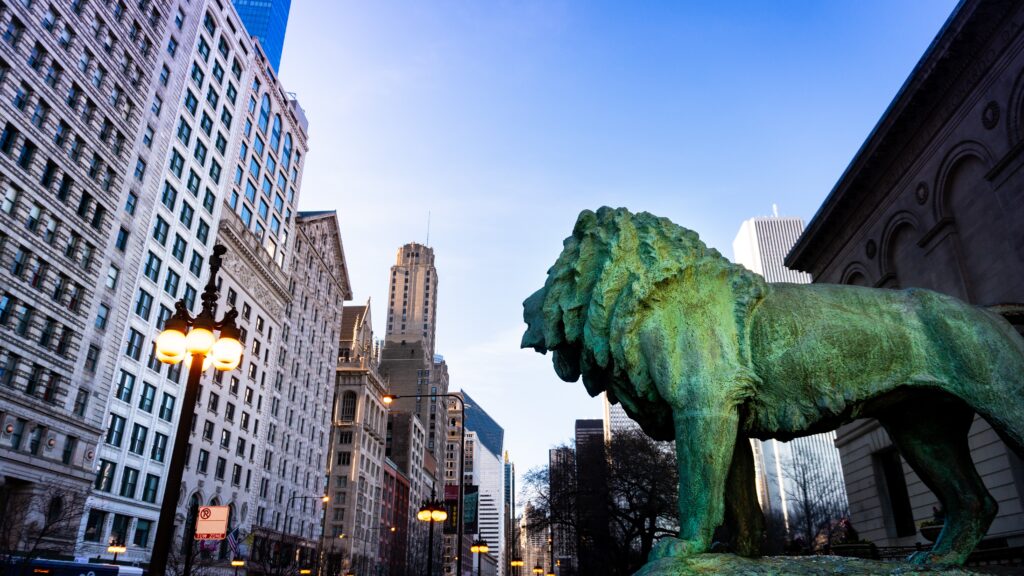
During the 1960s, the white population left the city for the suburban areas, a process known as white flight, while African Americans still moved beyond the Black Belt. Despite the continued loan discrimination against Blacks, the real estate industry adopted what was called blockbusting, which caused a drastic alteration in the racial composition of some neighborhoods. The steel industry experienced a decrease in its number of workers due to structural changes in the industry, like globalization and outsourcing, which led to a significant amount of job losses for those with low-skill levels.
At its peak during the 1960s, the steel industry in Chicago had approximately 250,000 workers, but in 2015 this number had dropped to 28,000. In 1966, the Chicago Freedom Movement, led by Martin Luther King Jr. and Albert Raby, concluded with an agreement between Mayor Richard J. Daley and the movement leaders. Two years later, the city was the location of the 1968 Democratic National Convention, which was marked by physical confrontations both inside and outside the convention hall, with police officers attacking anti-war protesters, reporters, and bystanders.
Major construction projects, such as the Sears Tower (now Willis Tower, which in 1974 became the world’s tallest building), University of Illinois at Chicago, McCormick Place, and O’Hare International Airport, were completed during Richard J. Daley’s term.
In 1979, Jane Byrne, the city’s first female mayor, was elected and was especially noted for her temporary residence in the crime-ridden Cabrini-Green housing project and for leading Chicago’s school system out of a financial crisis.
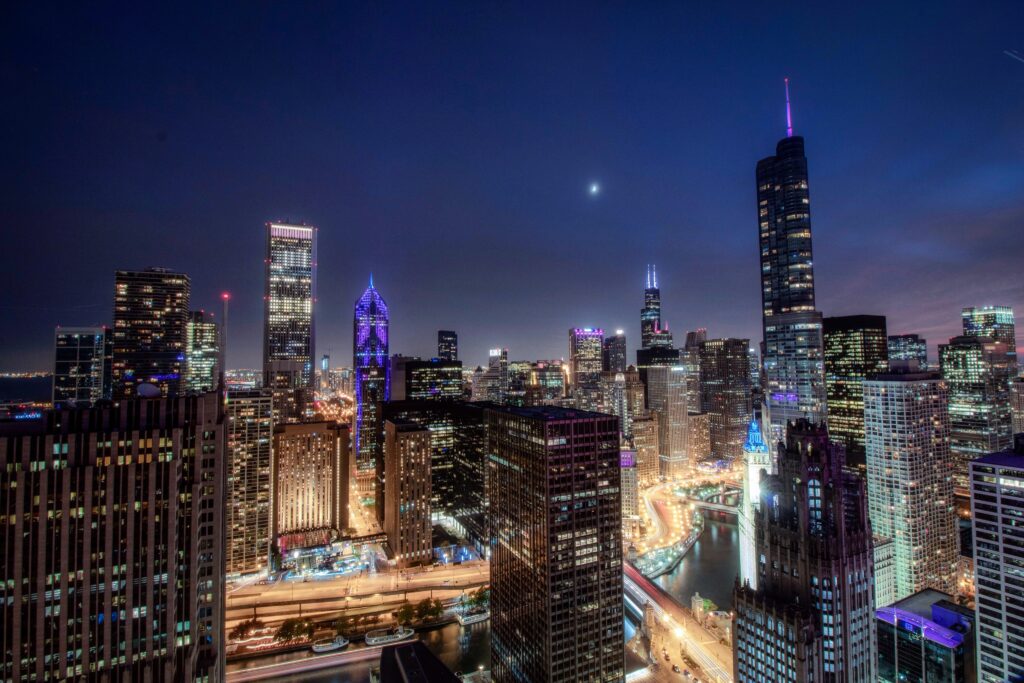
Chicago Today
The gross metropolitan product of Chicago is estimated to be around $670.5 billion, making it the third-largest in the United States according to September 2017 estimates. The city is known for its highly diversified economy and was even rated as having the most balanced economy in the U.S. In 2007, Chicago was named the fourth-most important business center in the world by the MasterCard Worldwide Centers of Commerce Index. It was also recorded as having the greatest number of new or expanded corporate facilities in the U.S. for the year 2014. In addition, Chicago’s metropolitan area has the third-largest science and engineering work force in the country. The city also placed ninth on the UBS list of the wealthiest cities in the world in 2009. It is a major global financial hub, with the second-largest central business district in the U.S. The city is the seat of the Federal Reserve Bank of Chicago and many of the world’s largest exchanges, such as the Chicago Stock Exchange, the Chicago Board Options Exchange (CBOE), and the Chicago Mercantile Exchange (the “Merc”), which is owned, along with the Chicago Board of Trade (CBOT) by Chicago’s CME Group.
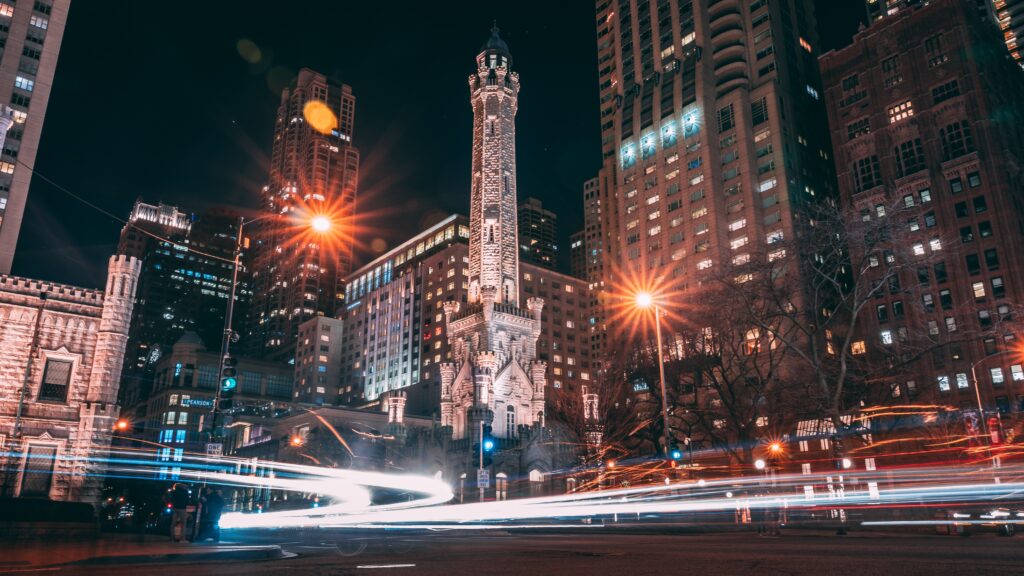
In 2017, Chicago exchanges traded 4.7 billion derivatives with a face value of over one quadrillion dollars. Furthermore, the city is the birthplace of the Chicago school of economics, which has produced 12 Nobel Prize winners. Chicago also has a large labor pool of about 4.63 million people in its metropolitan area. Illinois is the home of 66 Fortune 1000 companies, including those in Chicago. The city is also the base of operations for numerous Fortune Global 500 and Financial Times 500 companies. Chicago was also ranked the top metropolitan area in the nation for corporate relocations for six consecutive years.
Chicago has a large manufacturing, printing, publishing, and food processing industry and is the headquarters of several medical products and services companies, such as Baxter International, Boeing, and Abbott Laboratories. Moreover, it is a major transportation hub, with the Illinois and Michigan Canal and the railroads in the 19th century having been vital to the city’s success. Additionally, the retail sector in Chicago has been active since its early development, with many well-known companies, such as Montgomery Ward, Sears, and Marshall Field’s, being based in the city. It is also a major convention destination, with McCormick Place being the largest convention center in the nation and third-largest in the world.

